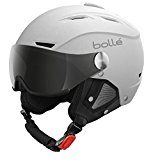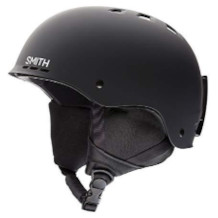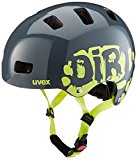Women's bike helmet purchasing advice: how to choose the right product
- What you need to know
- Bicycle helmets greatly reduce the risk of suffering dangerous head injuries in a traffic accident.
- The right fit on the head is the be-all and end-all. Therefore, before making a purchase, measure your head circumference and choose the correct size based on it.
- Vents keep your head cool while riding, mesh protects against insects, and removable interior padding increases comfort.
- Whether riding off-road or on a fast track, extreme conditions call for extras like a protective visor or an aerodynamic design.
- Do not continue to use a helmet after a fall, and do not buy a used model – any damage is not always visible from the outside.
Life saving accessory
A bicycle helmet can be a lifesaver in critical situations on the road. In the event of a fall on the head, it significantly reduces the risk of serious injuries in this region – in the forehead area even up to 90 percent. Nevertheless, wearing a helmet in road traffic is not compulsory in most countries, even though it is repeatedly demanded by medical associations and insurance companies. So if you frequently ride your bike, especially in traffic or at high speeds, a helmet is a wise choice.
To speak of “women’s bicycle helmets” is actually misleading; bicycle helmets are generally unisex. Women are probably more likely to look for a helmet of smaller size, since they have on average a smaller head circumference than men. However, this is usually not dependent on the model or manufacturer.
Bicycle helmets all undergo strict safety and material tests according to EU standard specifications. In the process, you have to withstand numerous loads and survive various accident simulations. If passed, the models have the DIN standard EN 1078, which is required for sale in the EU.
Types bicycle helmets
Most bicycle helmets on the market are manufactured using the so-called in-mold process. This means that the outer shell of durable plastic is connected to the thick inner layer of the helmet. This consists of expanded polystorol (EPS), a type of solid polystyrene. In the event of an accident, the acting energy is reduced because the slightly elastic EPS layer acts like a crumple or buffer zone. The In-Mold construction is particularly durable and robust. Soft-shell helmets, which consist only of the EPS layer and used to be very common, are hardly available anymore due to their low protective effect.
Micro shell helmet
The micro-shell helmet is the most widespread and suitable for most female riders. Weighing between 200 and 350 grams, it is not too heavy and can be adjusted to fit the head with handy adjustment options. Large vents ensure that enough air gets to the head while driving.
Twin shell helmet
This helmet has an additional grid installed between the outer shell and the inner layer, which gives the helmet construction even more stability. Therefore, it is not an actual construct in the in-mold design. This design is especially useful for very lightweight helmets and those with extra-large vents, as is the case with road bike helmets.
Hard shell helmet
Because it has a thicker outer shell, this helmet is ideal for stunt bikers and downhill riders. It is heavier and provides special protection against mechanical impact. This design also offers more protection in the event of a fall on scree or travel on densely overgrown paths. Although a hard-shell helmet has only very small ventilation slots, this does not have a particularly dramatic effect if you are exposed to less airstream in the trick course or do not wear the helmet for long at a stretch.
Airbag helmet
Not a classic helmet in the true sense of the word and therefore usually rated out of competition in tests is the Hövding airbag helmet from the Swedish manufacturer of the same name. However, due to the unusual and innovative design, it should be mentioned. It is a kind of neck brace that holds a protective airbag for the entire head. In the event of an accident or jolt, the neck brace opens and stretches the airbag over your head within a tenth of a second.
In tests, this make performs very well in many respects; shock absorption, for example, is up to three times better than a conventional bicycle helmet. But the system is not perfect: In the event of a head-on collision, the Hövding cannot guarantee the same level of protection. There is also some weight on the neck and shoulder area: The airbag helmet is a good three times heavier than a normal bike helmet, and in high temperatures you quickly sweat in the corresponding area. For shorter trips in everyday life and stationary traffic it is a good alternative, but on longer trips it can become uncomfortable over time.
What does MIPS mean?
If you start researching for a suitable bike helmet, you will probably come across the term MIPS. This stands for “Multi-Directional Impact Protection System” and describes that a plastic shell is installed inside the helmet, which can move in all directions. In the event of a fall on the head, especially at an angle, the MIPS system compensates for rotational movements, which minimizes the energy acting on the skull and brain. For female users, the wearing experience changes only minimally.
The right helmet size
To find out which helmet size fits your head, you need to measure your head circumference. To do this, it is best to use a tape measure, which you put once around the head. Start at the forehead, about an inch or two above the eyebrows, and run the band around as straight as possible and just above the ears.
| Size designation | Head circumference |
|---|---|
| XS | 46-51 cm |
| S | 51-55 cm |
| M | 52-57 cm |
| L | 56-62 cm |
| XL | 61-65 cm |
| XXL | > 65 cm |
The values in this table are not set in stone, but for the most part reflect the manufacturers’ specifications. There is no reliable standard size, however, you can always also adjust a bicycle helmet a little and optimally adapt it to your head. The side straps can always be tightened a little more via the closure adjustments on the chin; some models can also be adjusted on the forehead ring inside the helmet shell.
The helmet should fit as perfectly as possible: Once you have closed the chin strap, you should leave about a finger’s width of space between it and your chin. Now shake your head, the helmet should not wobble, but at the same time it should not press and the strap straps should not rub your cheeks or ears. Provided that you wear glasses in everyday life or bicycle glasses while riding, you should also wear them to try on bicycle helmets. This way you can see if the respective models are compatible and do not clash. If you have been wearing bike helmets without the MIPS system, switching to a model with this safety feature may involve a change in the size of helmet you need.
Choose the larger model
Manufacturers usually recommend buying the larger model if you are wavering between two sizes or your head circumference fits two sizes. At 50 centimeters, for example, this would be helmet size S, at 53 centimeters M. A helmet that is too big can always be adjusted smaller by making fine adjustments – the other way around is more difficult.
What makes a good helmet?
The ideal helmet doesn’t let you feel that you’re wearing it – until an accident happens. So it must not only meet all safety criteria, but also be as comfortable as possible. This way, you won’t have a hard time wearing the bike helmet for a long and hopefully accident-free period of time. For some situations – such as competitive cycling races, off-road riding or difficult visibility conditions – there are special designs, features and accessories.
Air vents
To help you keep a cool head while driving, helmets have elongated vents. Through them comes fresh wind under the helmet; at the same time, heat accumulation is avoided. 15 to 20 slots are not uncommon. They are streamlined so that they do not brake even at high speed and strong driving wind.
Interior padding
Foam pads are attached to the inside of most bike helmets for a comfortable and snug fit. At best, they can be removed, for example, thanks to Velcro, so you can wash them. Pay attention to the temperatures at which you are allowed to wash the upholstery; too hot water or a spin cycle may eventually damage it. Sometimes it is enough to soak the foam parts in warm water with soap for a few hours.
Insect screen
If there is a fine mesh between the helmet and the head, you can be sure that enough air but no insects such as bees or wasps come through the ventilation gaps. If insects were to get caught there in the airstream and crawl into your hair, an accident could quickly occur if you were stung.
Sunscreen
The small, sometimes removable protrusion on the front of the helmet has a double positive effect. On the one hand, it ensures that you are not blinded by sunlight depending on the angle of incidence, and on the other hand, it serves as an additional buffer zone: In the event of a fall forward, it protects the forehead region.
Light and reflectors
For better visibility, some helmets are equipped with reflectors. Alternatively, you can draw attention to yourself with reflective stickers. Special helmet models are equipped with front or rear light or both, some even with a turn signal system. However, remember that such lighting does not replace the light on the bike, but only supplements it.
Visor
Anyone who regularly rides at high speed or off-road is well advised to use a visor. It protects the eyes from rain or splashing dirt as well as from wind and oncoming insects. On some models you can dismount this component, in other cases it can be folded in.
Light weight
Especially who is very fast or in the context of races on the bike, attaches importance to a very light helmet. Normally, a bicycle helmet weighs about 250 to 300 grams; special road bike helmets are lighter. Here, manufacturers arrange the extra-large vents so that the helmet is aerodynamic.
Rain hood
Not part of the helmet per se, but a handy companion in bad weather is the rain hood. It can be pulled over the helmet and prevents water from getting through the vents, while remaining permeable to air.
Bicycle helmets have an expiration date
Keep in mind that you can’t wear a bike helmet forever – even if you stay accident-free with it. It is recommended to replace the helmet after about six years in use. During the time it is exposed to precipitation, extreme temperatures and sunlight, which can damage the material. This means that maximum protection can no longer be guaranteed. Sometimes the time may have come earlier. If you can spot porous spots on the surface, it is a sure sign.
Under no circumstances should you buy a used helmet: You can not be sure if the material is okay and the product has been used without accident. Damage to the material may not be as easy to detect from the outside.

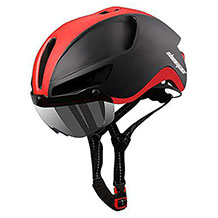
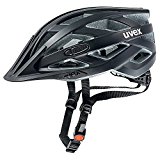
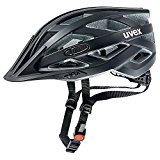
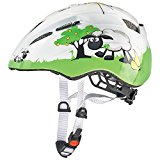
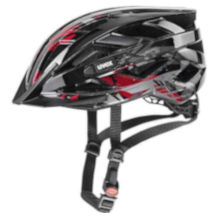
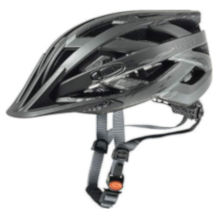











 5,345 reviews
5,345 reviews
